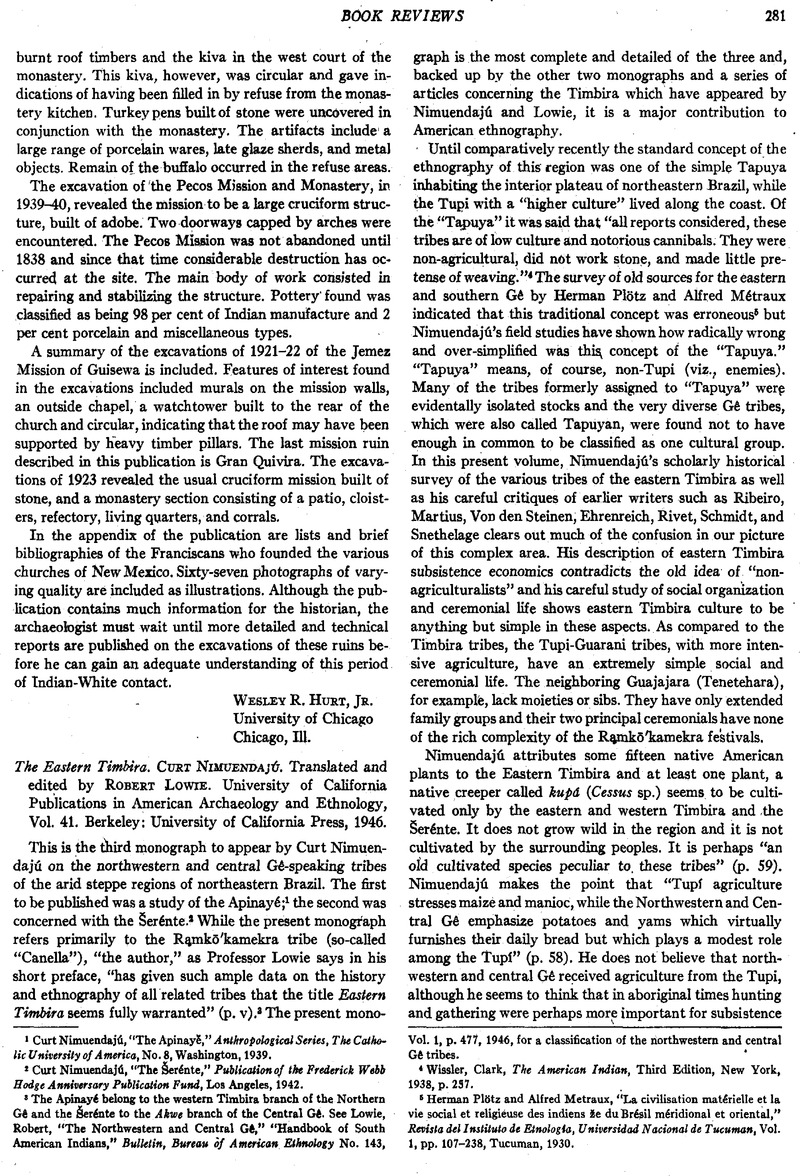Article contents
The Eastern Timbira. Curt Nimuendajú. Translated and edited by Robert Lowie. University of California Publications in American Archaeology and Ethnology, Vol. 41. Berkeley: University of California Press, 1946.
Published online by Cambridge University Press: 25 January 2017
Abstract

- Type
- Book Reviews
- Information
- Copyright
- Copyright © The Society for American Archaeology 1947
References
1 Curt Nimuendajú, “The Apinayě, ” Anthropological Series, The Catholic University of America, No. 8, Washington, 1939.
2 Curt Nimuendajú, “The Šerénte,” Publication of the Frederick Webb Hodge Anniversary Publication Fund, Los Angeles, 1942.
3 The Apinayé belong to the western Timbira branch of the Northern Ge and the Šerénte to the Akwe branch of the Central Gt. See Lowie, Robert, “The Northwestern and Central Gt,” “Handbook of South American Indians,” Bulletin, Bureau if American Ethnology No. 143 Vol. 1, p. 477, 1946, for a classification of the northwestern and central Ge tribes.
4 Clark, Wissler, The American Indian, Third Edition, New York, 1938, p. 257 Google Scholar.
5 Plötz, Herman and Metraux, Alfred, “La civilisation matérielle et la vie social et religieuse des indiens Že duBrésil méridional et oriental,” Rcvisla del Instituto de Etnologio, Universidad National ie Tucuman, Vol. 1, pp. 107–238, Tucuman, 1930 Google Scholar.
6 Lowie, Robert H., “A Note on Northern Gê Tribes of Brazil,” American Anthropologist, N.S., Vol. 43, Menasha, 1941, pp. 188-95CrossRefGoogle Scholar.
- 2
- Cited by


